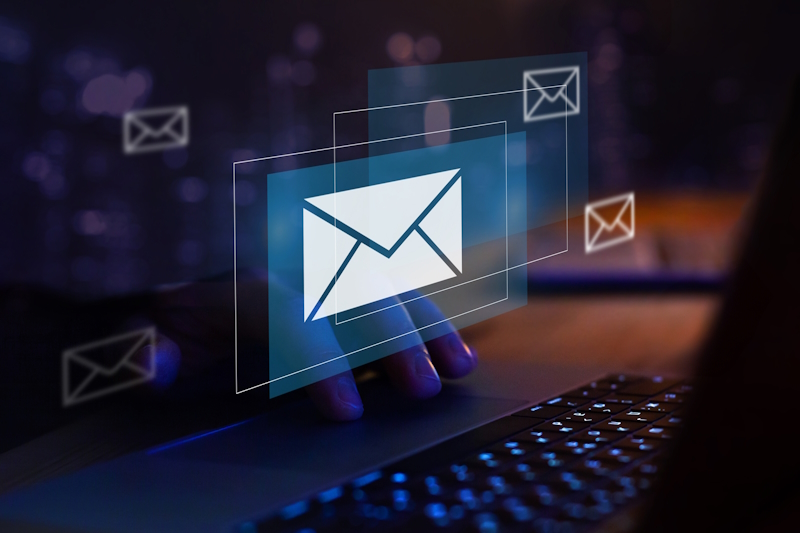Knowledge Base
DMARC - Advanced Email Authentication and Configurations
OVERVIEWEffective email security is crucial for protecting sensitive information, and DMARC serves an important function in this approach by enabling domain owners to address unauthorized email activities. Proper implementation of DMARC improves defenses against phishing and spoofing threats while also helping to uphold an organization's reputation and support compliance with regulations such as GDPR and HIPAA. |
The Value of DMARC for Corporate Network Email Security
Incorporating DMARC into a corporate network's email security strategy significantly enhances protection against phishing and spoofing attacks. By ensuring that only authorized emails are sent from a company's domain, DMARC helps to safeguard the organization's reputation and prevent the compromise of sensitive data. This additional layer of email authentication fortifies other security measures, creating a robust defense against evolving cyber threats.
Basic Configuration for Deploying DMARC
Implementing DMARC involves a few essential steps:
- Create a DMARC Record: Add a DMARC record to your domain's DNS settings. This TXT record will include policies on how to handle emails that fail authentication checks (none, quarantine, or reject) and an email address for sending reports.
- Configure SPF and DKIM: Ensure your domain has properly configured SPF (Sender Policy Framework) and DKIM (DomainKeys Identified Mail) records. These are critical for DMARC to function correctly since they provide the necessary authentication mechanisms.
- Publish the DMARC Record: The DMARC record should be published in the DNS. An example DMARC record looks like this:
`v=DMARC1; p=none; rua=mailto:This email address is being protected from spambots. You need JavaScript enabled to view it.; ruf=mailto:This email address is being protected from spambots. You need JavaScript enabled to view it.; pct=100;`
Here, `v=DMARC1` specifies the DMARC version, `p=none` indicates the policy (which can be adjusted to `quarantine` or `reject` as needed), `rua` provides the address for aggregate reports, and `ruf` specifies the address for forensic reports. - Monitor and Adjust: Configure DMARC in monitoring mode (`p=none`) to collect data and analyze the results without impacting email delivery. Review the DMARC reports to identify authentication issues and resolve them. Once confident, adjust the policy to quarantine or reject to enforce stricter email handling.
By following these basic steps, organizations can leverage DMARC to establish a secure and trustworthy email environment.
DMARC operates at three levels: none, quarantine, and reject.
- At the 'none' level, DMARC does not impact email delivery; it simply monitors and collects data.
- The 'quarantine' level directs suspect emails to a recipient's spam folder, reducing the risk of malicious emails reaching inboxes.
- The 'reject' level is the most stringent, instantly blocking emails that fail authentication checks, effectively stopping them from being delivered. Implementing DMARC prevents phishing attacks and unauthorized mail and improves the overall trustworthiness of an organization’s email communications.
However, setting up and maintaining DMARC involves more than just a basic configuration. It requires intricate DNS record adjustments and ongoing management. For optimal performance, email authentication protocols SPF (Sender Policy Framework) and DKIM (DomainKeys Identified Mail) must also be established and aligned with the DMARC policy. The implementation process takes time; it requires careful monitoring and adjustments to refine and correctly tune the DMARC strategy. This ongoing management ensures the alignment of email authentication practices and their effectiveness in securing email communications. Proper DMARC implementation can also help organizations comply with GDPR (General Data Protection Regulation) and HIPAA (Health Insurance Portability and Accountability Act) regulations.
 |
One crucial aspect of DMARC is its reporting capability, which allows domain owners to receive detailed reports on email activity. These reports provide valuable insights into the legitimacy of emails sent from their domain and any threats that may have been identified. This information can be used to further refine the DMARC strategy, identify potential vulnerabilities, and detect any unauthorized use of the domain.
While DMARC provides a powerful defense against email spoofing and phishing attacks, it is not a comprehensive solution for all email security threats. It should be used as part of a multi-layered approach that includes other security measures such as email encryption, spam filters, and antivirus software. Additionally, regular employee training on email security best practices is crucial in maintaining a strong defense against cyber threats.
Utilizing a mailing list service such as Constant Contact, Mailchimp, or Higher Logic necessitates additional configuration to ensure emails are not flagged as spam. These services require proper alignment with authentication protocols like SPF, DKIM, and DMARC to validate the emails' authenticity. Failure to properly configure these settings can result in emails getting flagged or blocked by spam filters, severely impacting delivery rates. Setting up these records involves updating the DNS settings for the sender's domain to include the correct information for the mailing list service. Ongoing monitoring and adjustments are crucial to adapting to any changes in the email security landscape and maintaining the credibility and deliverability of the emails. Hence, while these services simplify campaign management, they also require a diligent approach to email authentication and security setup.
DMARC is not just a checkbox that can be ticked and forgotten; it represents an extensive layer of checks performed on incoming emails both for the sender and receiver. It can fail to deliver its maximum benefits or cause inconsistent delivery and communication issues if managed incorrectly. Effective DMARC implementation requires managing, monitoring, and fine-tuning the settings to adapt to emerging threats and evolving email practices. Misconfigurations can result in legitimate emails being mistakenly flagged or blocked, causing disruptions in vital communications. Therefore, it's crucial for organizations to approach DMARC with diligence, ensuring proper setup and ongoing monitoring to achieve the desired level of security and reliability in their email communications.
In conclusion, DMARC offers a valuable layer of protection for organizations looking to secure their email communications. Its implementation requires careful planning and ongoing management to ensure its effectiveness. With the rise of cyber attacks targeting sensitive information through email, implementing DMARC has become essential for any organization serious about protecting their data and maintaining trust with their customers. So, it is always recommended that proper DMARC implementation be part of the overall email security strategy.
Is your company set up to correctly utilize DMARC and other email security configurations to help protect your network? DMARC, by default, is generally not included due to the time required to plan, set up, and manage, so don't assume. By utilizing DMARC, along with other security measures and regular employee training, organizations can significantly reduce the risk of data breaches and maintain the integrity of their systems. Email is often the weakest link in security because it involves users who scammers can target. Contact Intrada today to discuss comprehensive email security solutions that protect your organization from these threats.
|
Contact Information: |
Hours of Operation: |
OUR FOCUS
Intrada Technologies is a full-service web development and network management company with a focus on creating ongoing, trusted partnerships with each of our clients.
We make sure our clients have what they require to run their businesses with maximum efficiency and reliability, as many of their needs are mission-critical.
Our unique, collaborative partnerships allow us to provide our clients with the assurance that we will be there when they need us.

